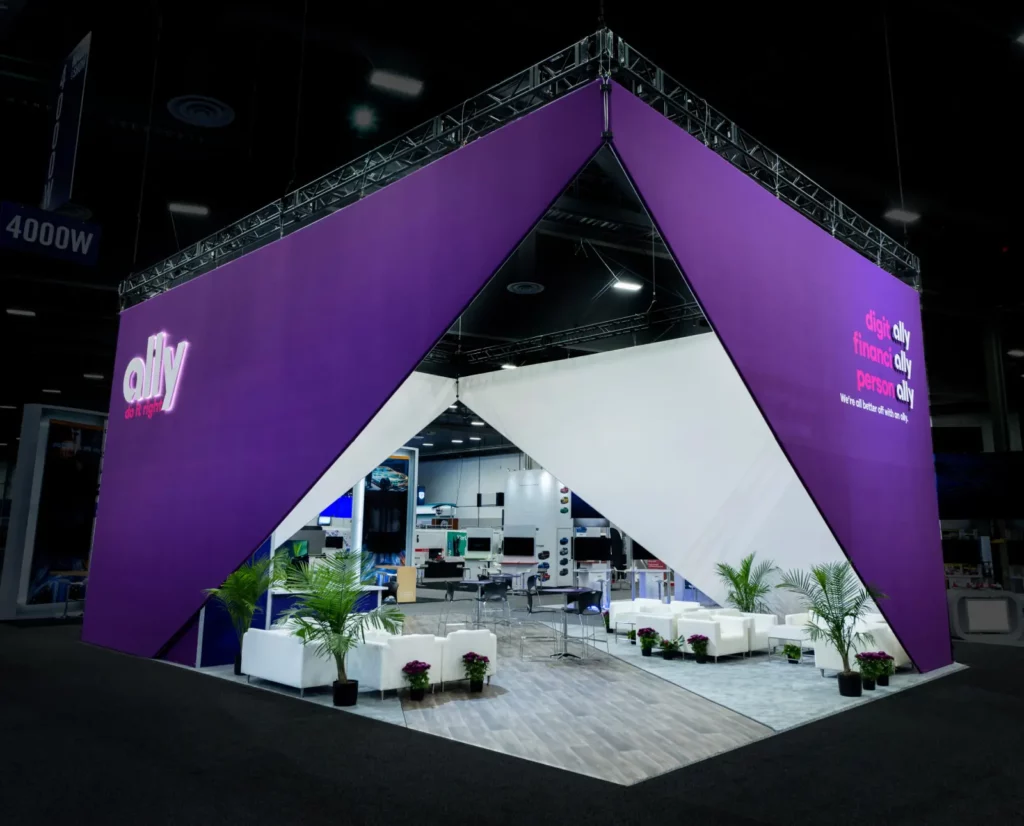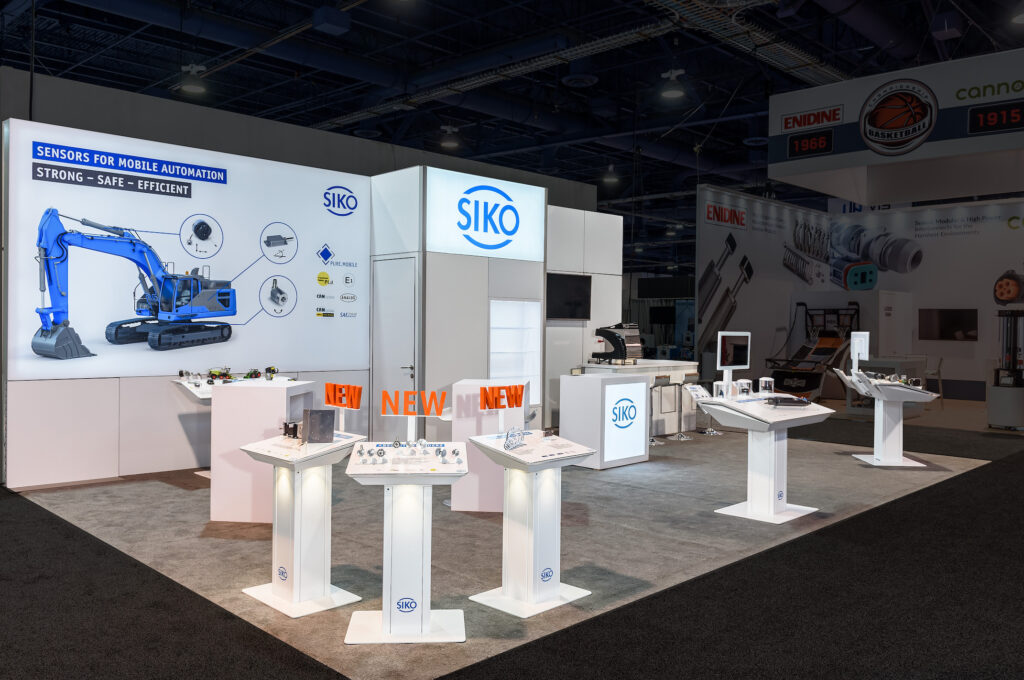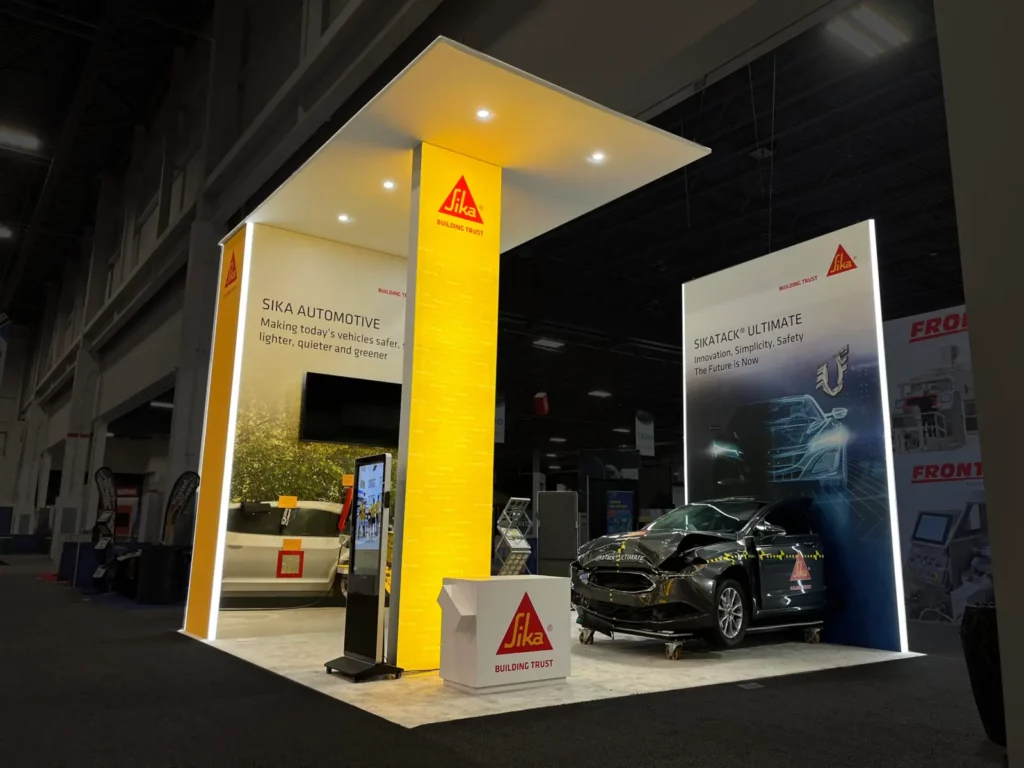Participating in trade shows can be a worthwhile investment for businesses in a huge range of industries. The cost of setting up a trade show booth can vary widely, ranging from a few thousand to tens of thousands of dollars, depending on several factors like the show location and booth size and design. Accurate budgeting is crucial for companies to ensure that you’re able to maximize your return on investment. Here’s a guide to various trade show expenses, helping you make informed decisions and maximize the impact of trade show participation.
Breaking Down the Costs
When planning a trade show booth, companies face a variety of costs that can significantly impact their budget. These expenses can be broken down into several key categories:
- Booth Design and Construction: Booth size is the first factor to consider, since larger spaces often require more materials and intricate designs. More elaborate designs also tend to necessitate more specialized labor and costly materials.
- AV & Technology: Integrating modern technology into a booth can be crucial for attracting attendees and effectively demonstrating products or services. The type of technology you require depends on your goals for the event. Some possibilities include monitors, iPads, LED tiles, and video walls. Labor costs for installing and dismantling the equipment also contribute to the overall cost.
- Flooring and Furniture: The right furnishings for your booth affect both comfort and visual appeal. Flooring options can range from simple carpeting to custom-designed tiles. Furniture costs also vary based on the style, comfort, and functionality needed to meet your goals for the event.
- Lighting: Basic lighting setups may be adequate for some booths. However, spotlights and lighted displays can often set booths or important features apart and be worth the extra cost. The right lighting choices affect both aesthetics and functionality of various features.
Overall, the cost of setting up a trade show booth can vary significantly based on all the factors above. For basic, smaller booths using standard materials and simple designs, costs might start as low as $100 to $150 per square foot. This includes modest AV and technology setups, standard carpeting, basic furniture, and straightforward lighting. Mid-range booths, which may feature custom designs, enhanced AV technology such as high-quality video walls, custom flooring, and branded furniture, can cost anywhere from $300 to $600 per square foot. For high-end, elaborate booths that incorporate large-scale, intricate designs, premium materials, state-of-the-art technology, and sophisticated lighting systems, costs can escalate to $1,000 per square foot or more. Once you consider your goals, overall budget, and booth size, you can more accurately come up with a specific idea of your potential costs.
Variable Costs to Consider
There are also several variable costs to consider when budgeting for trade shows. These costs can fluctuate based on a variety of factors, including:
- Shipping and Material Handling: Shipping large and heavy booth materials can be complex and costly, especially for international shows. Choosing small, lightweight materials and avoiding rush shipping can keep costs down.
- Labor and Personnel Costs: Staffing costs include wages, travel, accommodation, and daily expenses. Additional labor may be required for assembling and dismantling the booth.
- Show Services and Miscellaneous Expenses: Essential services like electricity and internet access are often costly but critical for booth operation.
Location-Specific Pricing
The cost of participating in a trade show can vary dramatically depending on the venue and location, primarily due to differences in union rules, city-specific costs, and venue fees. These factors can influence everything from booth rental to the cost of services and labor:
- Impact of Venue and Location: Union rules at certain venues, particularly in cities like Chicago or New York, can significantly increase labor costs due to specific requirements for handling and setup. Booth rental and service costs can also vary. Specifically, venues in major markets tend to charge more due to increased demand.
- Choosing the Right Space: To save money while maintaining visibility, consider selecting a booth space that is near entrances, food areas, or along main walkways. Corner booths or those at the end of rows can also offer increased visibility without premium costs.
Maximizing Your Trade Show Investment
Maximizing your investment in trade show participation requires strategic planning and attention to detail in several key areas:
- Design for Engagement: An aesthetically pleasing yet functional booth design is critical in drawing attendees and encouraging interaction. Work with skilled designers, architects, and production teams to create a design that represents your brand and meets your marketing objectives.
- The Role of Customization: Fully customized booths can be quite expensive, but modular components, reusable elements, and custom rentals can provide a tailored look without the full cost of a custom build.
- Calculating ROI: ROI from trade shows should consider both tangible benefits like sales and leads and intangible benefits like brand exposure and networking. Set clear objectives before the event and use tools like lead capture software and post-event surveys to measure success.
Case Studies and Examples
At Lindsay Exhibit Group, we’ve worked with several clients to help them incorporate technology, design, and strategic location choices that balance both cost and impact.
For example, our work for Ally has varied significantly depending on the show, location, type of exhibit, and other associated costs. For shows with more space availability and a higher ROI potential, the brand utilized large seating areas, screens, and other features to deliver a high impact. However, those where space and budget were more tight can require a smaller booth with just one or two cost effective features.

Another prominent client we’ve worked with is sensor electronics manufacturer SIKO. For this brand’s booth, we’ve made the most of space and budget by calling attention to the company’s most important tech features in hands-on displays. Other high impact features include large signage and display lighting.

Overall, planning and budgeting for a trade show booth requires understanding a huge range of potential costs from booth design to labor expenses. Understanding these variables can help you invest wisely in these areas and significantly enhance your ROI. At Lindsay Exhibit Group, we specialize in designing trade show booths that are tailored to the specific budgetary needs and goals of each client.
Reach out to learn more about our process and maximize you investment in your next trade show.
